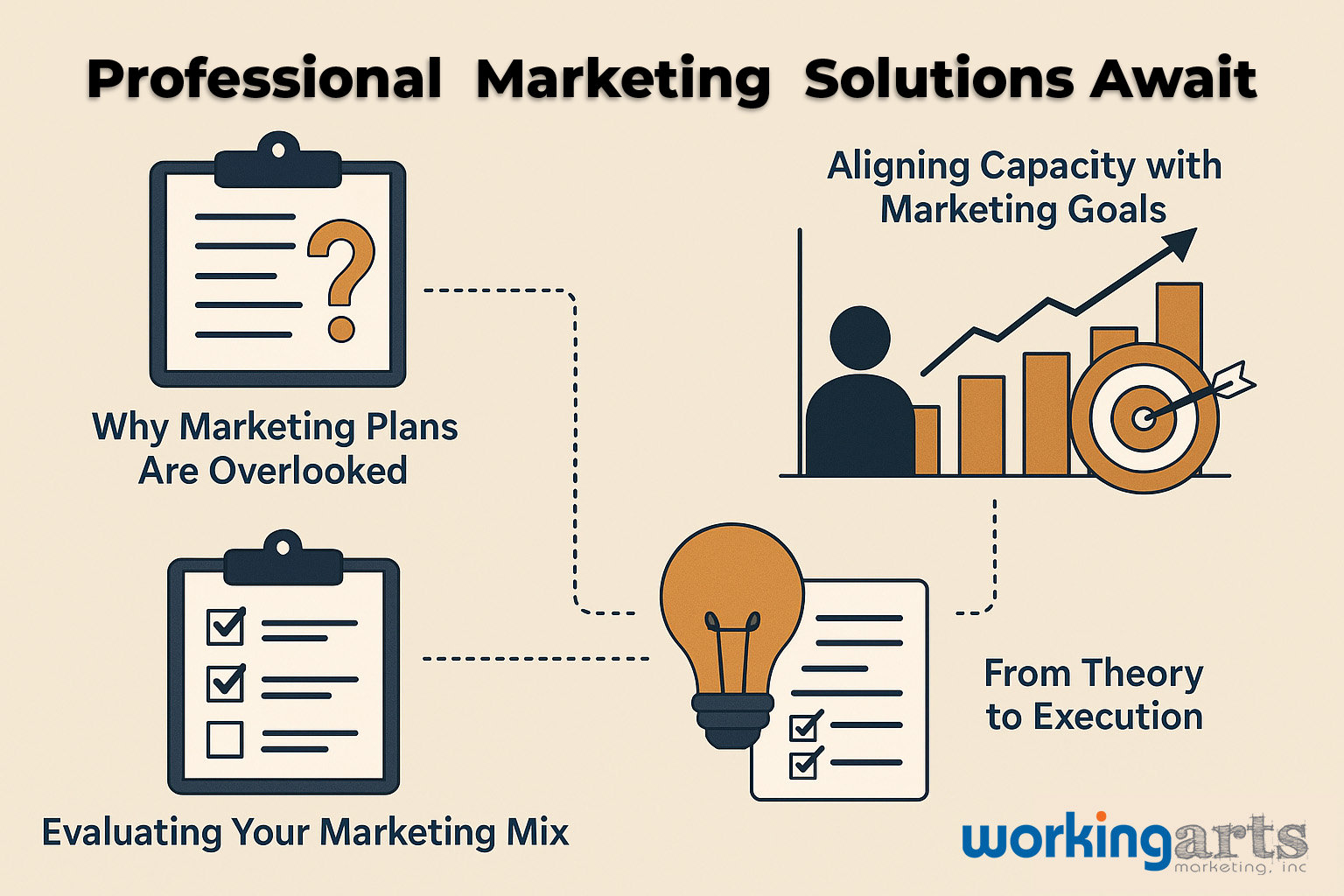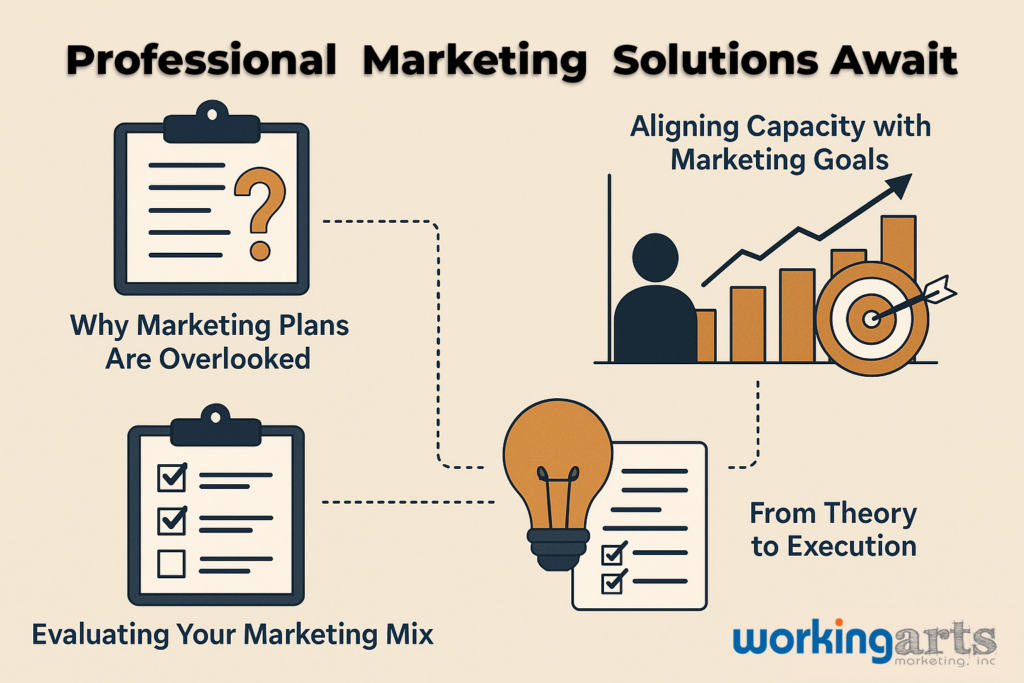Por qué se pasan por alto los planes de marketing
Muchas empresas se lanzan demasiado rápido y sus propietarios suelen pasar por alto los planes de marketing, a pesar de haberlos identificado desde el principio como esenciales para el crecimiento y el éxito. Una de las razones es el tiempo: a medida que aumentan las operaciones cotidianas, la planificación estratégica pasa a un segundo plano. Y lo que es más grave, el marketing requiere financiación, a menudo sin beneficios inmediatos o visibles. Con el tiempo, a medida que la empresa encuentra su ritmo, el plan de marketing pasa a un segundo plano. Sin embargo, sin una hoja de ruta, ¿cómo puede una empresa trazar un camino hacia el crecimiento real?
Alinear la capacidad con los objetivos de marketing
Todo empieza con un objetivo que se ajuste a su capacidad actual y prevista. Por ejemplo, si tiene 10 vendedores que pueden gestionar 15 clientes potenciales al día, su equipo puede gestionar 750 clientes potenciales a la semana. Esa capacidad se convierte en su objetivo de marketing duro de generación de clientes potenciales. La siguiente pregunta es: ¿qué combinación de marketing le llevará hasta allí? ¿Cómo atrae clientes potenciales de calidad por cada dólar de marketing que gasta?
Evaluación de su marketing mix
Un plan de marketing sólido incluye una variedad de canales de generación de clientes potenciales. Esta diversidad le permite probar, cuantificar y comparar la eficacia de cada método. Diferentes productos, servicios y condiciones de mercado pueden afectar drásticamente al rendimiento de estos canales. Algunas campañas pueden producir respuestas rápidas pero de menor calidad. Otras pueden generar clientes potenciales de gran valor tras una exposición constante. Y otras pueden no funcionar en absoluto.
El éxito no sólo depende de la selección de actividades, sino también de la calidad de los mensajes, las herramientas que utilice para contar su historia y las métricas que utilice para medir el rendimiento. Por eso debe crear un conjunto de activos de marketing, adaptarlos a sus campañas, probarlos con su público, evaluar los resultados y perfeccionar sus esfuerzos utilizando lo que resulte más eficaz.
De la teoría a la práctica
En un mundo ideal, su estrategia sería exhaustiva y estaría perfectamente alineada. Pero las limitaciones del mundo real a menudo reducen su alcance. Por eso es crucial empezar con una visión completa: definir todas las tácticas posibles, presupuestar en consecuencia y estudiar su potencial. Una vez hecho este trabajo de base, puede priorizar en función de lo que se necesita ahora frente a lo que se necesitará más adelante.
Un plan de marketing estratégico le ayuda a pasar de una toma de decisiones reactiva a un crecimiento proactivo basado en datos. Conozca sus herramientas. Ponga a prueba sus estrategias. Invierta sabiamente. Así es como se crea un impulso sostenible a largo plazo.


